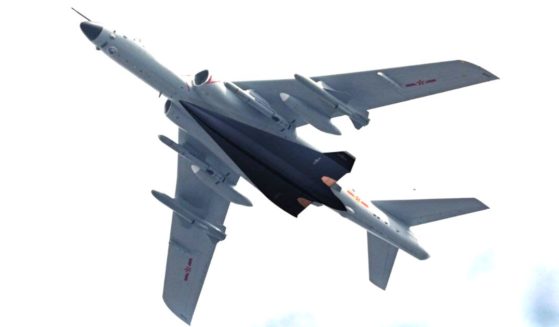Watch: Russian Boat Tries Ramming US Ship, Almost Capsizes Itself
In February 1988, two Soviet warships deliberately rammed into U.S. Navy ships in an attempt to assert Soviet dominance over parts of the Black Sea.
Fortunately for those aboard the American ships — and for American-Soviet relations in general — the Soviet ships were tiny in comparison with the U.S. warships involved in the incident.
The 1980s saw the U.S. defending its right to “innocent passage” near the coastal states along the Mediterranean and the Black Sea. The U.S. did this by periodically sailing warships through the channels from the Mediterranean to the Black Sea, according to The Washington Post.
According to the Los Angeles Times, the American warships in the bumping incident were less than 10 miles away from the Crimean coast. While the U.S. only recognized a 3-mile international limit on territorial waters, the Soviet Union claimed a 12-mile radius.
The American ships were also operating according to the U.N. Convention on the Law of the Sea, which allowed warships to navigate outside of traditional sea lanes as long as those ships were on innocent passage.
The Black Sea ship bumping incident, occurring as the Cold War neared its end, involved the American warships USS Caron and Yorktown.
A Soviet warship slammed into each of them in an effort to push them into international waters.
According to the Los Angeles Times, the Soviet ship told the Caron via radio that “Soviet ships have orders to prevent violation of territorial waters, extreme measure is to strike your ship with one of ours.”
The Caron’s response was to refer to international sea laws, saying, “I am engaged in innocent passage consistent with international law.” It was then that the Soviet ship turned to bump into the Caron.
However, the Soviet vessel was significantly smaller than the Caron, and it tipped sideways after the collision. The Caron, meanwhile, had no damage.
The Yorktown was also bumped, and it reported minor damage.
The encounter brought Soviet and U.S. sea law discrepancies to a head. While the U.S. held that there was no legal basis for coastal nations to limit warships to sea lanes only, the Soviet Union disagreed, seeing the U.S. presence in the Black Sea as a threat.
According to The Post, the Soviets reacted to the collision with “rage and threats.”
However, U.S. officials were firm in their belief that they were in the right, according to The New York Times.
“We intend to continue exercising our rights under international law,” a State Department spokesman under then-President Ronald Reagan said at the time. ”The Soviets are obliged to comply with their international commitments.”
Even if it may have cost a little Soviet pride, it’s a good thing that the incident was as one-sided as it was. If the collision had resulted in serious injury or death, U.S.-Soviet relations would have been seriously damaged at a crucial period in their shared history.
Truth and Accuracy
We are committed to truth and accuracy in all of our journalism. Read our editorial standards.











